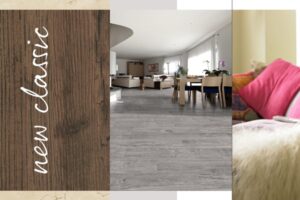
The most authentic trend in residential interior design has been labeled “TRUE YOU”. It is a celebration of uncensored self-expression and one-of-a-kind spaces.
Minimalism has reigned supreme for more than a decade. Less is more. Keep it simple. Neutrals are the base for any good design. Everything should be balanced. There should only be one main focal point.
STOP…there are no rules!
Today, there is a movement to use home and office environments as a personal canvas. Dress the walls and floors with personality, take design risks, and create something that inspires. It reflects a shift in culture that celebrates true self-acceptance and the “perfectly imperfect” … with a hint of rebellion.
This is a maximalist response to the perennial minimalism trends, and it marches to the mantra “less is a bore”. It brings forth luxurious textures, bold prints, shiny fixtures, and raucous colors. Wall paper is back with dramatic oversized prints and fabrics that are textured and even three-dimensional. Everything is a conversation piece. Floors feature oversized and uniquely shaped tile. Furniture is colorful and visually enticing. Layered excessively in the space are emotionally evocative mementos and tchotchkes.
While a push-back on minimalism is a key factor, it’s not the only reason we are seeing this trend. Globetrotting generations with a desire for personal expression are experiencing more of the world and bringing back the fashions and decorations from these excursions. It is a bit of escapism, a beautiful distraction from the political and cultural climates that we face in the day to day. It becomes a reminder of the beauty and complexity in many parts of our world.
TRUE YOU is a trend that will have staying power. The rules and parameters of this look are undefinable. It exuberantly refuses restriction as it blends styles and ideas to encompass an authentic “dare to be you” mentality. There is no wrong direction, simply add more of what you love. Be generous with color and art. Strive for comfort with a smattering of glamor. Find pieces that spark interest and laughter. Perfection is not the goal, personalization is. Embrace your excessive side!
FLORIDA TILE
 Refreshed. Reimagined. Redefined
Refreshed. Reimagined. Redefined
Today's lifestyles are much less formal and far more hectic than in decades past. As a result, designers are challenged with helping busy clients create multifunctional spaces that are casual and livable. This informal style is called "NEW CLASSIC."
While traditional interiors of the past featured dark color palettes and heavy furniture, today's designs nod to the past, but are much lighter, brighter, and relaxed.
If you are of a certain age, you probably remember a room in your parents’ or grandparents’ home that was “off limits”. Maybe it was a dining room that was only used on holidays or a living room that was furnished with antiques and fabrics not meant for the “every day”. Formality and symmetry were important. There were probably matching end tables and/or lamps. Everything just went together. These rooms were most likely orderly, predictable, and dignified. These were not spaces that would work with a rushed and chaotic lifestyle.
Forget that formal, forbidden living room at your grandmother’s house!
As modern life has redefined the way living spaces are used, traditional style has transformed with it. Enter: NEW CLASSIC. Brought into the current era, this updated style puts emphasis on the comforts and conveniences of present-day life while still maintaining the refined elegance of traditional design. The decor is soft and inviting with a contemporary, sometimes eclectic touch.
Furniture retains the curved lines and rolled arms of early period pieces, but with lighter, more practical fabrics. It still references historic shapes, but seats are now large enough for sinking in or lying down. It’s far more comfortable when entertaining family, friends, and, of course, snuggling with the family pet.
The saturated colors of yesterday’s traditional homes were rooted in English country style. Today’s NEW CLASSIC palette is refreshed with lighter shades of classic colors and creamy off-whites to keep the look familiar but updated. Layered onto that neutral background are natural wood tones and accents of warm metals throughout the home.
Floors still have the look of centuries old wood or stone but are moving toward materials that can stand up to heavy foot traffic and indoor pets. Porcelain tile that mimics the quintessential character of traditional floors are featured throughout the home and they are becoming a point of interest. Designers are ditching the oriental rugs and allowing the clean, elegant visual of the floor to make an impact.
You also see a move to repurpose formal spaces to better fit today’s lifestyles. A rarely used dining room can become a home office or homework space with the addition of a desk and focused lighting. Formal living rooms are being used as media rooms or game rooms. It comes down to how you move through your home, how you entertain, and how you raise your family.
Modern life has changed how we use our homes and what we expect from them. Traditional interior design needed a few modifications to fit this new reality. The answer is a NEW CLASSIC trend that feels welcoming, open, carefully curated, and warm. It is a style meant for today’s busy lifestyles. It is a style that refuses to be held back. It meets the future with time-tested elegance and a relaxed attitude.
Florida Tile
Natural stone has become a sought-after choice for fireplaces, countertops, flooring and more because of its natural beauty and durability. There are many different types of natural stone available, each with their own attributes. Among the most popular options are marble, limestone, travertine, slate tile, and granite. Because it is porous, sealing natural stone on occasion will help to prevent stains and the growth of bacteria.
Fortunately, sealing natural stone flooring or countertops is a relatively inexpensive task that only has to be done once a year (at most). Some products work for multiple years, making it a simple maintenance chore that will drastically extend the life of your natural stone.
The type of stone you have plays a major role in how frequently sealing the stone is required. A simple water test will determine how porous your stone is. Place droplets of water directly on the stone and see how long it takes for the water to absorb into the stone. If the water penetrates the stone quickly, it is very porous. If the water sits on top for longer, the stone is less porous.
Among the most porous varieties of natural stone are marble, onyx, and limestone. Without a sealant, these stones stain very easily. Sealing these stones every six months will help them continue to look like new. If you are looking for something more durable from the start, granite and quartz make great choices. These stones are easy to clean with soap and water and only require a sealant once a year.
Most new countertops and backsplashes arrive already sealed, eliminating the need for an initial coating. Down the line, sealing the stone again will help to preserve the look of the natural stone and prevent stains. Today, some stones feature resins that act as a built-in sealant, eliminating the need for an additional coating. If you have determined that your natural stone does require a coating, there are three main types of products to consider:

Taking the time to add a coat of sealant to your natural stone can provide many benefits. Not only does it protect against stains, but it also helps to prevent acid erosion and bacteria growth. This step also helps to keep any outdoor stone from being susceptible to frost weathering and salt damage. On the floor, some coatings even add a layer of slip resistance, ensuring sure footing. Check out our article on the pros and cons of sealing your pavers for more specific information about outdoor patio flooring.
As with anything, sealing floors has drawbacks as well as benefits. Unfortunately, sealing natural stone is a relatively frequent chore. Depending on the type of stone, it could be required as often as every six months. If an impregnating sealant is used, it may only be required only every one to three years. Even with proper application, there is always a chance that the sealant will not fully protect against stains. It is still good practice to wipe up any spills or standing liquids promptly and not allow them to sit for long, especially on countertops. On the floor, some sealants can tend to show wear patterns in the floor by becoming dull in areas that receive the most foot traffic.
Its natural beauty and durable design makes natural stone a popular choice for floors, countertops, bathrooms, and outdoor living areas. Keep it looking as spectacular as the day it was installed by properly sealing the stone when needed. Sealants help prevent this naturally porous material from stains, erosion, and wear while highlighting the beauty of the material. Weighing the pros and cons of the process and understanding the differences in the products will help you choose a sealant designed to prolong the life of your stone.
In today’s world we have a 24/7 connectedness that opens our minds to a melting pot of cultures and where the constant interaction of ideas and attitudes can, at times, lead to friction. But when embraced, these same elements can generate an energy and optimism that can be harnessed for inspiring solidarity and a sense of belonging in the world – a “COMMON GROUND”.
As we search for those things that link us together and make us realize we are more alike than different, we also long for a space that welcomes us in – a refuge that allows us to be ourselves while encouraging our spirit of adventure. Design that blends different backgrounds, experiences, and perspectives helps us to create a collaborative environment that proclaims our underlying unity.
Diversity is a necessary element for innovation, and today’s most inclusive trend in interior design takes inspiration from our large, fascinating world that is bound by unique styles and cultures. From the food we eat, to the clothing we wear, and the ideals we endorse, culture makes a huge impact on the way we choose to live and the environment we choose to live in.
When working toward a COMMON GROUND approach, we reach for the elements that spark our interests and blend them with the pieces from our own heritage that calm our soul. Layer textures, materials, time periods, colors, and anything else to create a cohesive space that exudes a commonality and peace that welcomes you and your tribe.
This trend demands that you tell your story. Be creative and mindful that your home (or retail space, or hospitality environment, or, well you get it…) is a direct reflection of you and can be as diverse and daring as you are. Be prepared to write your own rules.
Include photos and mementos from your past. Paint your traditional wood floor with an Asian inspired motif. Include your grandmother’s southern antiques next to mid-century modern acrylic pieces. Feature Moroccan art in Dutch minimalist frames. Tile your walls with exquisite Italian ceramics. Soften the scene with country roses grown in your urban garden. Then, serve Spanish sangria from a South African pitcher.
While it takes thought and a good deal of experimenting to make this eclectic and multicultural way of designing work for you, it will be worth it in the end. It is your haven, where you can exhale and feel good in every part of it.